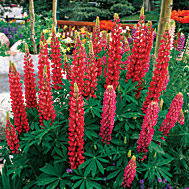 Garden Vocabulary: ICN – International Code of Nomenclature
Garden Vocabulary: ICN – International Code of Nomenclature
Someone has to manage all those latin names that pot up in books, nurseries and, more importantly, in our gardens. Who decides that that plant is a Clytostoma callistegioides and not a Ficus benjamina? Ever notice when plants change their Latin names. Moraea isn’t Moraea anymore. It’s now a Dietes.

By Carl von Linné – bibbild.abo.fi, Public Domain, Link
These names, formalized in the International Code of Nomenclature, is controlled by the International Botanical Congress which held its first congress in Vienna in 1905.
You can find more information on the ICN using the links below.
The International Code of Nomenclature for algae, fungi, and plants (ICN) is the set of rules and recommendations dealing with the formal botanical names that are given to plants, fungi and a few other groups of organisms, all those “traditionally treated as algae, fungi, or plants”.[1]:Preamble, para. 8 It was formerly called the International Code of Botanical Nomenclature (ICBN); the name was changed at the International Botanical Congress in Melbourne in July 2011 as part of the Melbourne Code which replaces the Vienna Code of 2005. As with previous codes, it took effect as soon as it was ratified by the congress (on Saturday 23 July 2011), but the documentation of the code in its final form was not finished until some time after the congressional meeting. Preliminary wording of some of the articles with the most significant changes has been published in September 2011.[2] — Wikipedia
What can you share about this Garden Vocabulary entry? Help educate us all in the comments!
This Garden Vocabulary series seeks to introduce and explain to you — and in many cases, myself — words and terms associated with gardening. Please let me know if there are any terms you would like me to explore. You can leave your ideas in the comments section and we can learn together!



